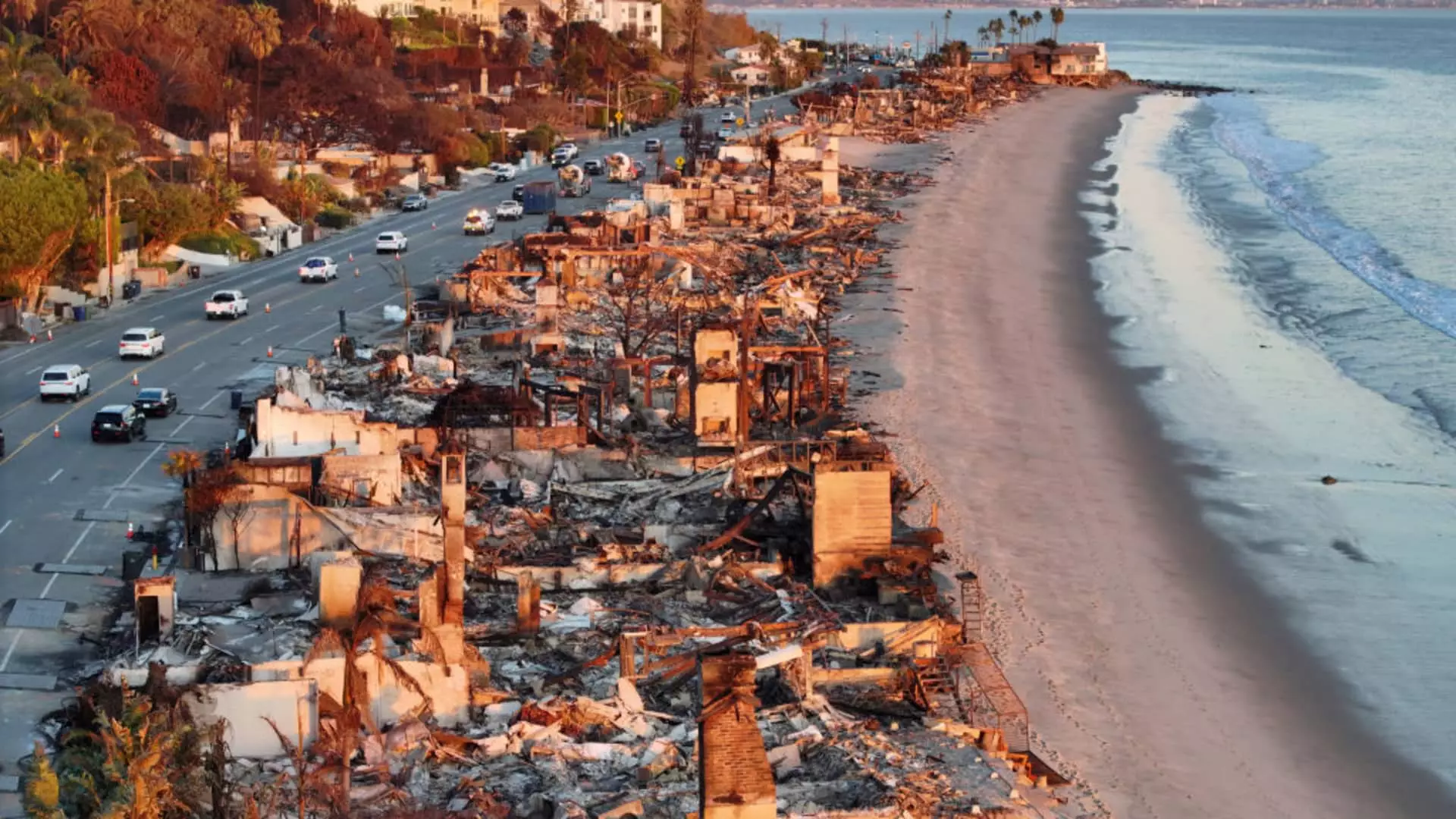In December, just as winter approached, Dan Preston launched his insurance startup, Stand, aiming to provide coverage specifically designed for properties in wildfire-prone areas. This innovative moment came with its challenges, particularly with the wildfires in California—a state known for its extended fire seasons. Ideally, Preston would have preferred to roll out his product after extensive market research and consumer feedback, allowing him to refine his offerings. However, fate intervened. Just weeks after debuting Stand’s services, devastating fires swept through Los Angeles, highlighting the urgent need for innovative insurance solutions.
The scenario paints a dire picture. With the loss of life, destruction of thousands of structures, and widespread devastation, the demand for specialized insurance products skyrocketed—seemingly overnight. Preston reported an astonishing increase in inquiries, with demand surging five to ten times in a brief span. This sudden need underscores a critical observation about the insurance industry: it often remains stagnant until an urgent crisis occurs.
Preston’s venture into the insurance space isn’t abrupt. With a decade of experience, including pivotal roles at Metromile and Lemonade, he aims to revolutionize a sector often criticized for its bureaucratic processes and outdated models. The reality, however, is stark; as insurers pull out of high-risk areas like California, the market dynamics shift. Goldman Sachs even estimated potential losses for insurers in the aftermath of recent fires to reach a staggering $30 billion.
What makes Stand different? By leveraging technology, particularly artificial intelligence, Preston intends to offer custom solutions that not only insure properties but also prevent future catastrophes. This dual approach is crucial, especially as many legacy insurers continue to retreat from high-risk zones, leaving homeowners vulnerable. Notably, approximately 10% of homes in Los Angeles remain uninsured, an alarming statistic that reveals the gaps in coverage and the industry’s failures.
A New Kind of Insurance: Proactive and Mitigative
The focus of Stand centers on educating homeowners about necessary preparations to make their properties insurable. Recommendations may include pruning vegetation, replacing wooden fences with non-flammable materials, or implementing concrete barriers. This proactive attitude shifts the conversation around insurance from merely being a safety net after a disaster to becoming an integral part of the risk management process. The implications of this are profound, especially for homeowners who have not considered how systemic changes can significantly reduce their risk.
Accessibility remains a challenge. As Stand navigates its early days, having insured only a handful of properties while engaging with hundreds of potential customers, the urgency for significant progress is palpable. Preston’s commentary reflects a broader vision in which insurance serves not only individual property owners but an entire community ethos toward safety and resilience.
Stand’s approach, while focused on individual properties valued between $2 million to $10 million, reveals a broader mission: fostering community resilience against wildfires. This larger vision requires collaboration between homeowners, city planners, and utility companies, all of whom play critical roles in preventing wildfires. To shift the conversation toward an effective societal response, collective behavioral changes are necessary, emphasizing not just the need for insurance, but a comprehensive strategy surrounding fire risk management.
Bill Clerico, Stand’s co-founder, articulates this sentiment, advocating for a greater emphasis on wildfire mitigation strategies such as forest management, rapid fire detection technologies, and community “hardening” efforts. His insights resonate with industry trends where innovation is stymied by slow-moving institutional buyers, including utility and insurance companies, signaling a need for renewed investment in adaptation solutions.
The Road Ahead: Challenges and Opportunities
The road ahead for Stand is riddled with challenges, particularly as the market landscape for wildfire insurance continues to shift. Yet, opportunities abound. The exodus of traditional insurers from California means that Stand operates in a space with less competition, allowing it to carve out a niche by leveraging superior data and technology for better risk assessment.
However, achieving meaningful change necessitates addressing the complex dynamics of neighborhood resilience and collaborative policy-making. Stand has the potential to influence not only the insurance market but also how urban environments are designed to withstand climate challenges. In the face of increasing adversities posed by climate change, startups like Stand could indeed play a pivotal role in reshaping the narrative around insurance and community preparedness. The journey is just beginning, but the stakes are high and the time for innovation is now.

